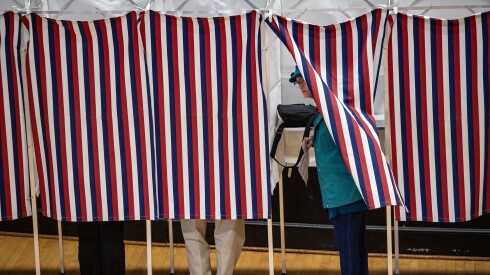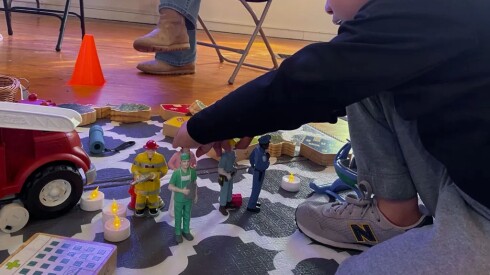Latest News
For the first time in 15 years, the city and union reached a deal without a strike or strike vote. The agreement will increase spending by $1.5 billion, mostly for raises.
If sensible ideas from a decade ago gain traction in Washington this year, they could boost U.S.-based manufacturing and international competitiveness, with a mixed impact on state and local tax revenues and policies.
The administration is shifting resources away from Housing First, the long-established approach of getting individuals into supportive housing as the first priority.
Legislators have made water a priority this session, with the state falling short of ever-increasing demand. Ideas for addressing the problem range from conservation to desalination.
San Antonio created a housing strategy that’s made it more affordable than most other large cities.
A new data dashboard from the Urban Institute fleshes out how the funding is being allocated by category and across states, counties and congressional districts.
The sheriff of Winneshiek County has complied with all federal and state immigration enforcement requests, but state Attorney General Brenna Bird said his Facebook post spread false information about the need for court orders.
The race for mayor in Mississippi’s capital features a dozen Democrats in Tuesday’s primary. Some complain there are too many candidates and too little information about them.
A panel of Massachusetts energy experts discussed how the commonwealth can promote renewable energy even as the federal government pulls back on approvals and funding.
Building new highways doesn’t ultimately ease congestion. By changing behavior, reducing capacity is a better solution.
Non-citizen voting is rare but a number of states and Congress are considering laws requiring proof of citizenship.
Universal vouchers and other private school choice programs have had a lot of momentum in red states. Support from Trump and Congress could push them further.
Democrats are not enjoying their time in the wilderness — or seeing a way out. At the same time, Wisconsin is now hosting the most expensive judicial race in the nation's history.
Residents of mobile-home parks have seen costs rise as investors buy up properties. Lawmakers in several states are looking to add more guardrails.
Some schools have offered free tuition, grown dual credit programs or helped students’ credits transfer when they move on to four-year schools.
Utah’s new legislation addresses parents’ concerns, doesn’t tax state or local resources for enforcement, and is popular with the public. Other states should see it as a model.
Departments have to receive permission to replace workers. The city is facing a $20 million shortfall driven by overtime costs for public safety.
Much has been said about the health consequences of severe Medicaid cuts. A new analysis from the Commonwealth Fund considers the jobs and revenue that states could lose.
Methadone is an effective treatment but too often state rules and health-care providers’ practices create barriers to successful outcomes. More sensible approaches are needed.
The Democrat is expected to announce a run for a third term in the coming weeks. In the meantime, he is devoting much of his energy to attacks on the administration in Washington.
The City Council wants to shift funds toward projects that have been stalled for years or even decades. Sacramento has seen 300 traffic deaths over the past eight years.
The state faces a severe shortfall, but a proposed package would raise or shift $1 billion in taxes to secure funding for various projects.
Too often people think of jury service as a hassle and a financial burden, rather than an empowering way to participate in justice. Some courts are trying to fix that and, in the process, make it easier to diversify their jury pools.
The storm damaged about 20 percent of western North Carolina’s child-care centers. Early childhood education is often neglected in disaster recovery plans and efforts.
In a switch from its previous approach, the chamber has passed a series of bills that will reduce barriers to construction and limit localities’ ability to set limits.
It’s not only about the research funding that has made America a world leader in innovation. Community and technical colleges are crucial to meeting our workforce needs.
Next month, voters will replace ex-Mayor Sheng Thao, who was recalled and then indicted. The two leading candidates both accuse the other of ties to Thao.
The Maryland legislature is considering dozens of proposals to make energy cheaper, more reliable and more abundant. Meanwhile, residents’ utility costs are rising.
If Congress reduces matching funds for the Medicaid expansion under the Affordable Care Act, many states would suddenly face $2 billion shortfalls apiece.
Downsizing the Department of Education won’t fix what's wrong with our schools. We should mobilize state and local leaders to tackle its problems. Nobody is better qualified to lead such an effort than Lamar Alexander.
Sponsored
Most Read

















































